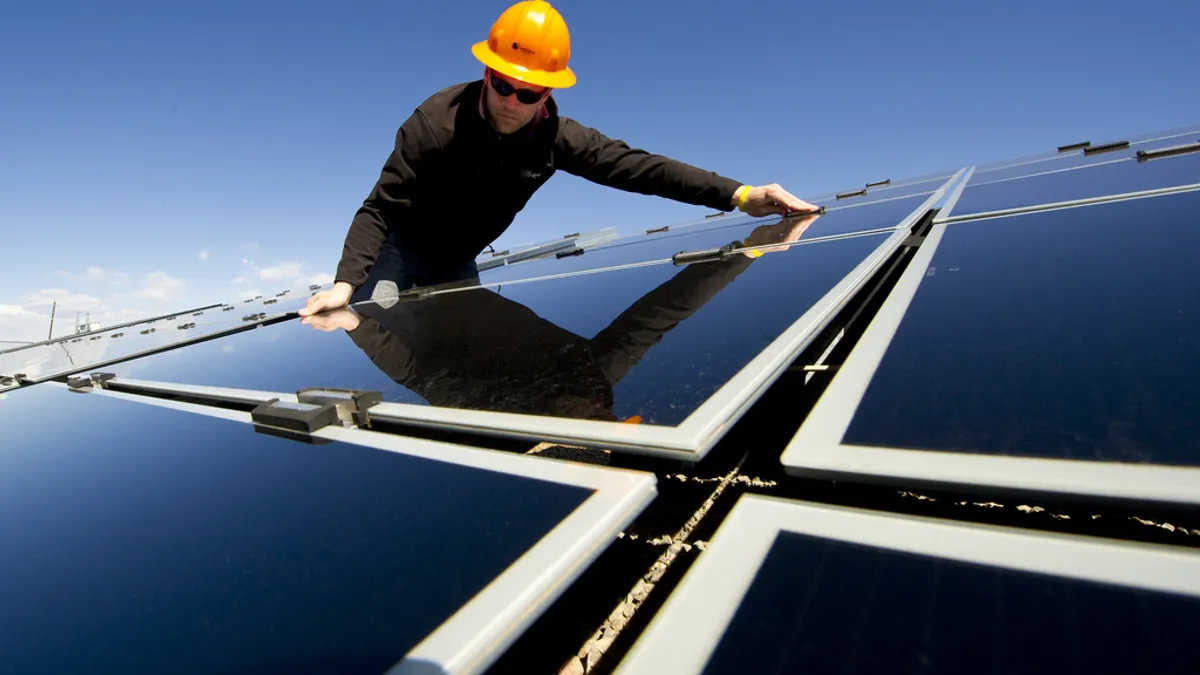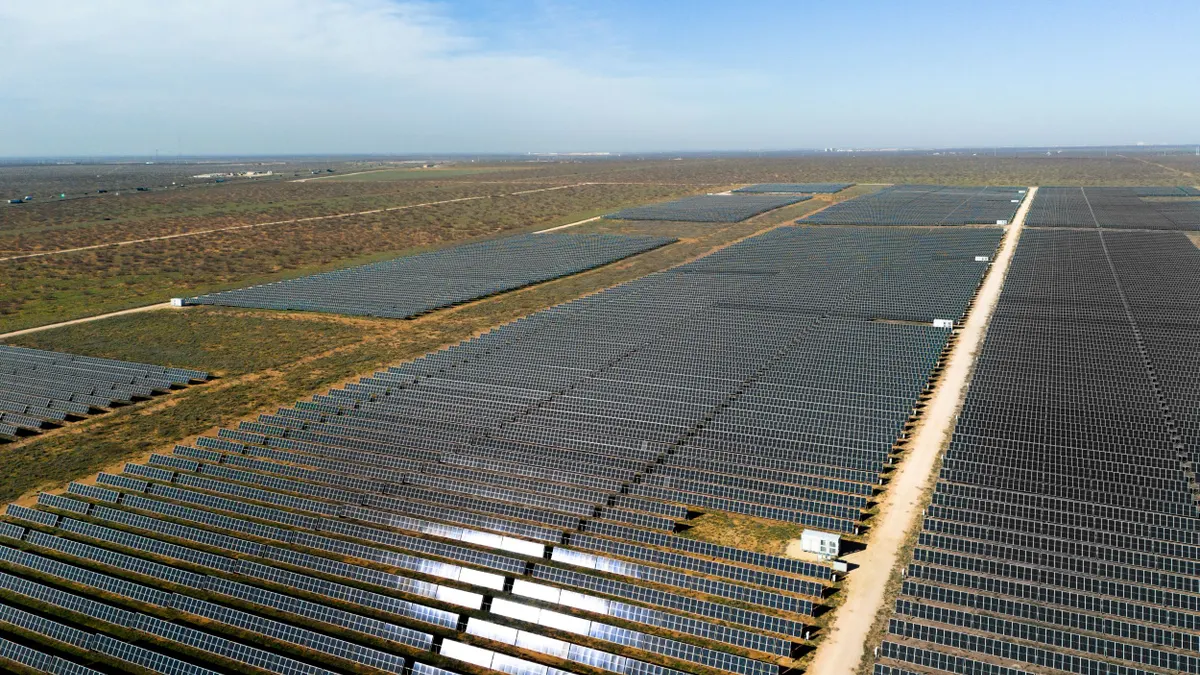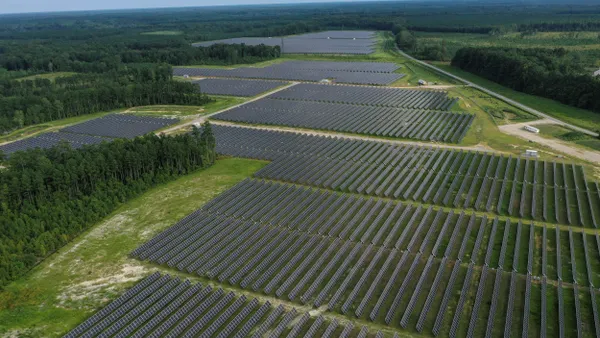Across most of the nation, it’s clear solar power is taking off. But still some states are lagging behind and are holding on to policies that cramp growth instead of nurturing it, according to a new report.
The Center for Biological Diversity (CBD) recently released a report listing the ten states with high solar potential blocking distributed solar development. These states, primarily located in the Southeast, hold 35% of total solar potential in the United States, but only account for 6% of the nation’s total installed capacity.
“We are building a campaign in the environmental community to support distributed solar in the built environment, on rooftops and other kinds of spaces, because it is wildlife friendly and an opportunity for a just energy system,” said Greer Ryan, research associate for the Center for Biological Diversity and author of the report “Throwing Shade; 10 Sunny States Blocking Distributed Solar Development.”
“Policy determines whether solar will be affordable, whether it can connect to the grid, and how utilities interact with their customers,” Ryan said. “A lot of whether it is possible for people to take advantage of the technology goes back to policy.”
In most regulatory hearings about solar policy, commissioners focus on the resource’s quantifiable value. But this report argues other values need to be considered as well.
“In order to avoid the worst impacts of climate change, it’s clear that a rapid shift to a 100 percent renewable energy system is needed by mid-century – a move supported by leading climate scientists, industry experts, religious groups, justice organizations and environmentalists alike,” according to the study. “Distributed solar energy plays a unique and critical role in creating a renewable energy future that stems climate change, promotes social justice and protects biodiversity.
The Center for Biological Diversity has long pushed for laws to protect the environment and ecological diversity. The focus on solar and other renewable energy policy is more recent.
“Too often utility profits are more of a concern than the impacts the energy system has on water resources and the air and the land and wildlife,” Ryan said. “Solar’s benefits to biodiversity and the climate and the community are not included in its valuation.”
But while environmental organizations like CBD regularly call for a greater array of factors to be included in solar valuation, many utilities and their allies bristle at the notion, arguing there should be separate policies to address things like biodiversity. In addition to outlining the 10 states CBD says are holding solar back, the report also highlights this divide between the utility and solar factions in the power sector.
The policy landscape
But Ryan acknowledges markets aren’t yet in place to harness the “tremendous” solar potential.
“Markets aren’t in place because the policy landscape is preventing market creation and expansion,” she said. “To realize the potential needed to make a swift transition to a clean, wildlife friendly, renewable energy system, we must do everything we can so every state can take advantage of distributed solar in the built environment.”
The paper zeroed in on six policies key to solar growth in three categories: market preparation, market creation and market expansion, Ryan said. Among the policies are interconnection standards, net energy metering (NEM) and solar access laws necessary to prepare a solar market.
“Without these policies in place, the barriers are often too great for installation, regardless of how interested the property owner is,” the paper reports.
Renewable Portfolio Standards (RPS) can also help spur market creation by setting minimum requirements for solar generation, called solar carve-outs. These, in turn, can drive demand for distributed solar.
Three areas of policy can also propel the market by broadening access, according to the report: Comprehensive community solar programs that include virtual net metering provisions; laws permitting third-party ownership (TPO) financing; and financial incentives like grants, rebates and tax credits.
These three policies can be seen in states leading in installed solar capacity, such as California, New York and Arizona, the paper notes. Conversely, the ten states highlighted in the report fall noticeably short.
Three out of 10 states don’t have net metering policies, which the report described as “possibly the most important policy model in place.”
Only three out of the 10 states allow TPO, which a GTM Research report said accounted for 72% of the national residential market in 2014 and is expected to remain over half the market through 2020. And none of the 10 states in the report have community solar programs in place, according to the paper.
In addition, nine out of the 10 states have poor interconnection laws and standards that end users looking to install panels. And finally, half of the states don’t have laws protecting would-be buyers from nuisance objections and potentially unreasonable local restrictions, the paper reports.
“These ten states are representative because they have high solar potential and the lowest distributed solar scores but many other states have similar issues,” Ryan said. “This is not an exhaustive list.”
But there is a chain effect in how the policy hierarchy is structured in the paper, Ryan added.
“Each state is different and their policy needs are different. The most important policy might be different from state to state and circumstance to circumstance.”
For instance, a person in Tennessee would have different goals depending on the person’s financial situation and whether the target was a rural or urban setting, Ryan said.
Solar valuation
Beyond specific solar support policies like net metering, a number of states have also taken up the broader question of what rooftop solar is worth to the grid and utilities alike.
In the first quarter of 2016, utility regulators in 13 states formally considered the complex challenge of how to value distributed generation, according to the North Carolina Clean Energy Technology Center (NC CETC). Regulators in 22 states worked on changes to net energy metering (NEM), which typically raises the same value question. The debates went on simultaneously in 11 states.
For Ryan, it’s not possible to have a substantive discussion about the economics of solar unless solar is “accurately valued.”
“Until you take into account the public health benefits to communities from breathing clean air and the economic benefits for communities enabled to generate their own power, it is hard to value solar properly,” she said. “You also have to consider the reduction of greenhouse gas emissions from solar and the financial burden that will come from inaction on climate change.”
That perspective on solar valuation doesn’t sit well with many of the nation’s utilities and their allies. Ashley Brown, director of the Harvard Electricity Policy Group, said that while he recognizes the need for environmental regulations, those goals shouldn’t be tied up in solar valuation itself.
“To increase biological diversity and protect wildlife, there should be laws to increase biological diversity and protect wildlife and that will turn everything into the price,” he said.
The Electricity Policy Group is funded by many of the nation’s largest utilities and the Edison Electric Institute (EEI), the trade group for U.S. IOUs. EEI referred Utility Dive to Brown for comment on the CBD report.
Brown favors regulating pollution and greenhouse gas emissions and understands Ryan’s concerns about public health and climate change, said in a phone interview.
A utility regulator in Ohio for 10 years, Brown recently testified to the Arizona Corporation Commission (ACC) that he recognizes the responsibility of regulators to make policy choices that target social objectives. But whenever possible, he told the ACC, “prices should be established by market forces.”
Where there are “market imperfections,” he said, prices should be “based on costs in order to best replicate what would have happened if the market were shorn of its imperfections.”
Such an endeavor requires discipline from regulators, he said, but considering particular technologies “may rank in the merit order of ‘social desirability’ effectively removes the discipline that is more likely to produce efficient results.”
Pricing through the marketplace or through cost-based regulation is likely to lead to “efficient performance” and “productivity.” But “subjective consideration of soft criteria, like a laundry list of ‘values’ of solar, independent of any comparison with other resources, are a step away from coherence, efficiency, and consumer benefits,” his testimony said.
Policies based on value, Brown told the ACC, are highly subjective and lack the granularity needed to understand the complexities of the electricity marketplace. They also tend to be “arbitrary” and “policy presumptive about selecting which externalities to consider.”
This causes them to be “devoid of such critical contexts as costs, markets, technology evolution, and the full range of options in the marketplace,” Brown testified.
Solar support policies
RPSs can get technologies “past a commercial hump,” Brown told Utility Dive. But once the technology is in marketplace, renewables mandates “don’t serve any purpose, and from an environmental standpoint may be harmful.”
The harm is that “they don’t address environmental concerns directly,” he said. He favors CO2 reduction, but “guessing” which technologies will best do it could “have adverse impacts economically and possibly environmentally.”
Brown does not object to TPO policies which, he said, can get more people involved in the marketplace, leading to more competition and efficiency. But leases require scrutiny, he cautioned. “There need to be strong consumer protections.”
He has strong objections to NEM because it is “contrary to the long term interest of solar energy and takes away from the value of solar and makes it an inferior product.”
With the “subsidies and cross-subsidies” offered through NEM, “vendors have zero interest in improving the product,” Brown said. “They want to keep solar as a niche product, not as a product that can play a mainstream role in the marketplace.”
He differentiates between the national solar installers and smaller, local installers who “have a much more innovative approach to selling solar and are not relying only on subsidies.”
More broadly incorporating storage, smart inverters, and a western instead of a southern orientation would increase the solar value proposition and move solar closer to subsidy-free competitiveness, he said.
By staying fixated on NEM, solar installers stay focused only on beating the retail price of electricity “which is ridiculous because the retail price of electricity includes all kinds of things they don’t provide, like distribution services,” Brown said.
It also shields them from competition with other technologies, he added.
If biological diversity and the protection of wildlife is the objective, standards must be set by regulations or legislation. “That internalizes the economics,” Brown said. “Then all kinds of technological approaches can compete to serve that objective.”
Choosing a technology to get to that objective “is very suboptimal,” he insisted. “Have the marketplace find the cheapest way because the concern is not the technology, the concern is environmental results.”
Ryan finds this analysis inadequate. If solar is valued by the marketplace only for “economic benefits as they relate to the utility and not for everything from public health benefits to climate benefits to community economic benefits,” she said, “utility-sponsored analyses are not very compelling.”
She is also skeptical of the idea of a cross-subsidy. “I have yet to see a strong report or assessment that shows costs are shifted because of distributed solar,” she said.
Time to 'think outside the box'
Solar policy is not static, the NC Clean Tech report shows. In addition to the proceedings on solar valuation and NEM in Q1, seven states were working on community solar, seven states were working on TPO laws or regulations, and three states were working on utility-owned rooftop solar policies or programs.
There were also 26 utilities in 18 states that proposed increasing monthly fixed charges on all residential customers and 8 utilities in 7 states that proposed adding new or increasing existing charges specific to rooftop solar customers.
Ryan’s lagging states were largely conservative politically, she said. All were in the Midwest and Southeast. “Nine of the ten have Republican governors and the states in the Southeast with poor solar policies are well known to be unfriendly to policy about climate change action as well.”
In the Midwest, she added, people might be skeptical about solar because their economies are based on fossil fuels. “But across the board it is the lack of active leadership at the state level for climate action that causes people to not create solar policy that would benefit the people and the environment.”
The paper is not exhaustive, but it can be one tool solar advocates can use when they lobby state regulators for policies that will support rooftop solar growth. “Only good policies can grow the amount of solar needed,” Ryan said. “We need to think outside box when it comes to accessing clean, wildlife friendly energy.”























